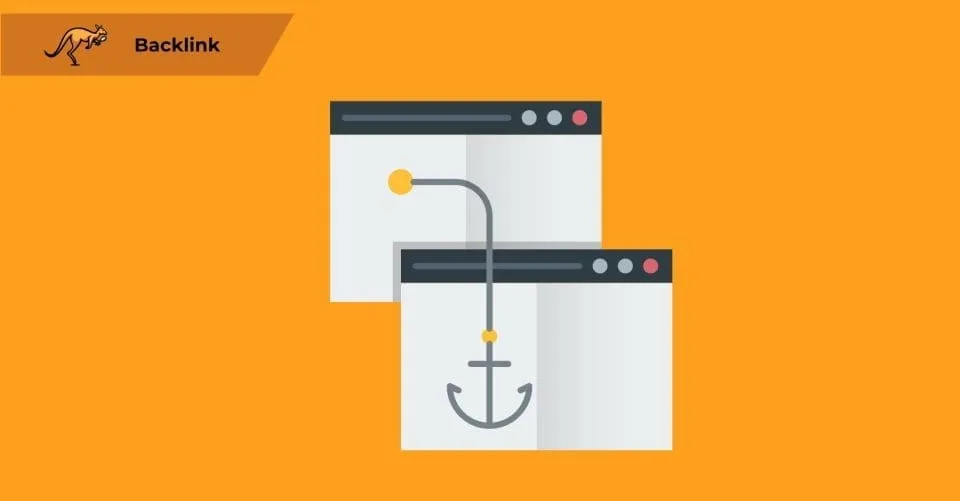The number of links pointing to a website or web page from different locations is referred to as backlink diversity. These links might originate from anywhere, including other websites, social media platforms, and directory sites.
The concept of Link Diversity is one that is usually taken for granted without much thought. But nothing should be accepted without first thinking carefully about it.
This is not to say that receiving the same type of link over and over again with no variation is going to work for your site; you need to think about where you are getting links from. Some consider link diversity to be an outmoded idea, as search engines have improved their algorithms to detect artificial links automatically.
In order to work out how best to approach link building, we need to think about what function link diversity has in site ranking and whether it is still important to SEO in 2023. Below, we are going to look at the possible value of having a diverse link profile for your position in search rankings.
Below, we will cover the best ways of managing link diversity and acquiring links from a variety of different locations without relying on link farms and manipulated links.
What are Backlinks?

Backlinks, serving as “votes” for a website, are hyperlinks from one website to a page on another, indicating the linked page’s relevance, quality, and authority.
These links signal to search engines that the content is endorsed by other site owners, which can boost the site’s visibility in search results. As multiple sites link to the same webpage, search engines infer that the content is valuable and deserves a higher position on search engine results pages (SERPs).
This relationship between backlinks and search rankings underscores the importance of understanding the underlying mechanisms that govern how search engines evaluate these links, leading us to discuss Search Engine Algorithms.
Search Engine Algorithms
Search engines have a challenging task: taking a user’s search query and returning the most relevant search results possible from the full indexed internet (i.e. Google’s index). This needs constant updating, as the way people use the internet keeps changing.
You might have noticed that Google search results are much less useful recently than they used to be: this is because the Google algorithm has fallen behind the SEO sector.
To make things more difficult for search engines, the SEO sector is attempting to fool the algorithm in order to benefit itself, often at the expense of actual organic searches. As a result, search engines have countermeasures in place to identify and eradicate any unethical behavior by manipulators.
These countermeasures have gotten more complex and efficient over time, and several link building strategies that were previously conventional are now certain to get you the dreaded Google webmaster penalties. These enforcement and punishment patterns can be expected to persist in the future.
Some SEO specialists use a percentage-based strategy to link diversity and backlinks in order to stay safe and rank highly. We, on the other hand, do not claim to know any clear-cut limitations that secure your safety, and we do not believe anyone else does either.
Google does not share the specifics of its algorithms, and anyone claiming to know how they work is almost certainly lying in order to profit from people who are desperate for a leg up.
Google’s algorithms constantly evolve, with updates released several times a year, progressing from basic link counting to sophisticated statistical analysis that evaluates backlink diversity patterns, with updates like Penguin specifically targeting unnatural link profiles that lack diversity or show manipulation patterns. A natural site typically displays a diverse and seemingly random backlink profile, the best defense against Google’s algorithms.
This randomness prevents the algorithms from detecting artificial link patterns, promoting a robust and resilient SEO strategy. This concept of diversity in SEO—not just in link profiles but across all aspects, including anchor text, content, keywords, and domains—is important.
Understanding this leads us directly to exploring statistical link analysis, which is pivotal in how search engines perceive and evaluate these varied strategies.
What Is Statistical Link Analysis?
In 2005, statistical analysis was proven to be in use for the first time. Statistical link analysis relates to backlink diversity by examining mathematical patterns in link profiles, where search engines use statistical models to identify natural diversity signatures versus artificial manipulation patterns, creating benchmarks against which your site’s backlink diversity is measured. The features examined can include criteria such as the number of outbound links on a page, the number of inbound links to pages inside a site, and so on.
When those features are graphed, the sites with varying percentages in their natural link profile tend to align along a curve. Outside of that curve, you will find a large number of outliers, most of which tend to be sketchy, including a massive cluster of spam sites. Because they reside outside of the regular ranges, these clusters are referred to as outliers.
Because statistical link analysis can detect trends in connecting relationships, the SEO industry recommended establishing a diverse set of incoming links in response.
So, rather than acquiring links just from link directories, they advised adding links from other sources as well so that the backlink profile did not stand out as distinct from other link profiles. This might be where the concept of link diversity originated.
Spam sites typically exhibit distinct statistical connection profiles that can be readily detected. To evade such detection, aligning the statistical connection profile with the average link profile can make modified links less obvious.
Consequently, to counterbalance an excessive use of keyword-optimized anchor text, a substantial increase in brand name anchor text is employed, maintaining an optimal anchor text ratio between keyword-optimized and non-optimized links.
This approach underscores the significance of diversifying anchor text within a link profile, setting the stage for a deeper understanding of backlink diversity.
What Is Backlink Diversity?
Backlink diversity refers to gaining inbound connections from various types of pages (such as directories, articles, and news links) and domains (.edu, .com, .net), which strengthens your SEO profile by creating a natural link pattern that search engines reward with higher rankings while preventing your site from appearing manipulative to search algorithms.
Link diversity entails getting a diverse range of anchor text in links as well as different types of connections, such as “do follow” links (links that transmit link equity, aka link juice, such as PageRank) and “no follow” links (links that do not transmit link equity such as PageRank).
Many people in the SEO community believe that having a wide variety of links in your backlink profile, including no-follow links, will be a major benefit because it will make your backlink profile look more natural.
The assumption is that collecting diverse inbound connections will maintain a site’s backlink patterns within a normal range, preventing them from seeming spammy.
Essentially, link diversity is the approach of employing several forms of backlinks to create a fully random footprint that Google engines cannot follow and, hence, cannot punish. Link diversity also helps the ranking process by removing obstacles.
When you look at a large site like Amazon, you will find that it contains a wide variety of utterly random backlinks. Its link profile is made up of backlinks from a wide range of sources, locations on the pages linking to it, power levels, ages, site types, site qualities, anchor text, and so on.
Consider another hypothetical site that just uses PBN (Paid Backlink Network) backlinks. On a blog, each outbound link is a contextual homepage link. All of these links have the same format and type of link, and all of them come from the same website or network of websites that are being used for these link schemes. Without any link variety, it is very easy to tell that a site like this is manipulating links, and it is also obvious to Google’s algorithm.
While relying solely on PBN links or guest posts can still yield rankings, such tactics are not advocated for long-term site sustainability in the SEO community. A robust, enduring website requires a well-rounded link profile incorporating a breadth of link types.
This strategic approach not only secures a site’s standing but also underscores the critical importance of diversifying your link profile, as link diversity directly impacts search engine rankings by distributing authority signals across multiple sources, which search engines interpret as widespread endorsement deserving of higher positions in search results pages.
Why Is It Important To Diversify Your Link Profiles?
Link diversity affects a variety of site-related aspects, including:
- Visibility – More links across a variety of sites expose your brand to a larger audience.
- Authenticity – Nothing appears more unnatural and manipulative than a swarm of deep links that are all from the same domain.
- Sphere of influence – a greater number of connections from a variety of websites indicates more trust and authority.
- Traffic mixes – connections from other sites generate new and unique traffic prospects for your site.
Let’s take a look at some of the biggest reasons that you should try to obtain a diverse backlink profile as part of your search engine optimization strategy.
Backlink Diversity As Futureproofing
Nobody outside of Google knows for sure what is hidden behind the surface of the Google algorithm. Nobody knows for certain what the future of search engine signals holds. Link variety is thus a kind of insurance against the unknown, comparable to owning a varied investment portfolio.
By keeping things diversified, you defend your site against Google penalties because backlink diversity prevents algorithmic red flags that trigger manual reviews, with varied link profiles acting as protection against Penguin and other algorithm updates that specifically target websites with unnatural link patterns.
If you put all your eggs in one basket, and then Google decides it does not like that basket, then you have a problem. If you have links from a wide range of different sources, any individual change will have a smaller impact on you.
Furthermore, connection diversity is just plain common sense. Building connections from the same sites yields declining results over time. The Google search algorithm is intelligent enough to detect suspicious linking patterns and discounts inbound connections from the same domains to the same deep pages, therefore nullifying the benefit of link building. That difficulty is resolved by diversifying link building.
Backlink Diversity Encourages Good Link Building Habits
Google and its algorithm are intelligent enough to detect any trickery. If you try to deceive the system by building links from a single precise anchor, you will almost certainly be punished. They can notice these tendencies and assume that you are attempting to boost your search rankings in a deceptive manner rather than allowing them to rise organically.
The search engine can detect whether a new website gets backlinks from high-authority domains. For example, if a freshly founded website is covered by large popular domains and important news sites but has nearly no backlinks from low-domain sites, it is likely to appear more than a little suspect.
In reality, most large newspapers will only cover you if others are also covering you. This is what makes such a site suspect, as well as the need for a varied connection profile.
A natural link profile demonstrates organically diverse relationships, where different websites link to yours using varied anchor texts—a practice Google recognizes and values because anchor text diversity prevents over-optimization penalties while creating a balanced distribution of keyword relevance signals that search engines interpret as authentic endorsements.
Uniform anchor texts, particularly in blog comments, can appear contrived, suggesting manipulation rather than genuine endorsement.
Effective link-building strategies prioritize anchor text diversity to foster high-quality links that align with SEO best practices.
This approach enhances site credibility and safeguards against algorithmic penalties, leading us to the important challenges posed by Google Penguin, the enemy of link diversity.
Google Penguin: The Enemy of Link Diversity

Modern link analysis uses a seed set of reliable sites, and Google calculates the distances between those trusted sites and a site that wishes to rank for a certain search phrase.
In statistical analysis from 2005, a spammer might overwhelm unnatural links with non-optimized links and seem statistically normal.
There is no such safe camouflage with contemporary link analysis. The bad links cannot be hidden among the usual non-optimized links. One of Google’s more recent algorithms, code-named Penguin, is a new method of detecting spam that alters the definition of what constitutes a “natural” link profile. That definition excludes link diversity, making a diverse link profile no use for disguising too many backlinks from the same lower authority sites.
While link diversity may not be the critical factor it once was, it remains an essential component of a comprehensive content marketing strategy.
A diverse link profile is crucial for safeguarding your site’s future SEO, ensuring that it can adapt to changes in search engine algorithms.
This approach prepares your website for potential updates and aligns with best practices in building a robust online presence.
Next, we will explore the various types of backlinks contributing to a diverse link profile, detailing how each can enhance your overall SEO strategy.
Types of Backlinks to Use for a Diverse Link Profile
There are many different types of backlinks you may encounter while building links, and you want to include as many of these as possible in order to create a diverse link profile, including no follow links, do follow links, and high-quality backlinks from high-authority sites.
Even internal links, external links from social bookmarking sites, social media platforms, or Facebook groups can be valuable. Just steer clear of the identical poor-quality links that link farms generate, as these will flood your link profile with certain links that are an exact match for one another.
Let’s take a look at some of the best types of links to use when you build links and diversify your link profile.
Blog Directories and Citations
Citations and specialist blog directories are popular techniques for both local and affiliate websites to gain connections. You submit information regarding your company to a website that collects, organizes, and catalogs listings for consumers seeking for certain services.
Websites linking to yours like this are an extremely simple technique to obtain backlinks for local SEO objectives, helping you to rise up the search engine rankings for locally detailed searches.
Citations, on the other hand, allow people to provide their name, address, and phone number. Both allow you to provide a URL for connecting to your target site or company, earning you a good and natural backlink. And they are unlikely to use the same anchor text, making them a great source of added variety for a diverse backlink profile.
Pillow Links
Pillow links are a type of white-hat link that serves as cushioning or insulation for your site instead of offering raw ranking power. They are ideal for developing a diversified link profile early in the life of a website.
Some SEOs only employ this form of link in the early phases of link development, but it should be used throughout the ranking process to preserve variety and naturalness. These sorts of backlinks are received gradually by natural sites during their lives.
Pillow links seldom rank a site on their own unless the site is in a very obscure and low-competition niche, but having some is just as important for establishing link diversity as acquiring the more strong link categories.
Web 2.0 Links
Web 2.0s are simply platforms that allow you to construct your own tiny websites that you may use any way you see fit. You may get a list of these platforms by searching for “High DA Web 2.0s” or “Do-follow Web 2.0s.”
Blogspot, Wix, and Weebly are a few examples of web 2.0 sites, as are social media platforms like Tumblr. Many of these are also relatively high domain authority websites, making them a valuable source of do follow links.
Because of the high authority of the domain and the ability to construct contextual backlinks with your choice of anchor texts, creating a Web 2.0 page with some relevant content and connecting back to your site creates a superb pillow link.
When combined with a link of their own (PBNs, niche edits, pillow links, etc.), these backlinks can become more than just pillow links to boost your link diversity. Because of the high authority website root domain behind these pages, they gain power more quickly. Do not overlook the value of more sites that use Web 2.0 when you build links! Remember, it is not all social media.
Press Releases
Press releases are items that are submitted to a service that distributes them to a vast network of news sites. Within the news item, you offer a link to your website. This is a valuable link building strategy because the link quality from news and other websites like this tends to be very high.
Press releases, like many other types of link, have been exploited and abused in the past. To be safe, always use them infrequently and only with branded and bare anchor text. When in doubt, consider if you are utilizing the press release in a natural way to deliver important information regarding your company.
Make sure they are good, and people will want to share them. You do not have to rely on artificial link building to boost your link diversity.
Because your press releases will be published on a wide number of websites, it is critical that they be as natural and non-spammy as possible. Put the effort in to write good press releases, and you will get links pointing to your page from some very high authority sites.
Nofollow Links
While nofollow links don’t pass link juice or enhance domain authority like dofollow links from high-authority sites, they play a critical role in link diversity by creating a natural-looking backlink profile that includes both link types, which search engines expect to see in organic link patterns since legitimate websites naturally accumulate both types.
Including nofollow links in your strategy contributes to the overall diversity of your backlink profile, which is important for a well-rounded SEO approach. Diverse link types, including nofollow links, ensure your profile is independent of one kind of link, thereby minimizing risks and enhancing stability in your rankings.
A varied link profile is vital as it prepares your site to withstand algorithm changes and penalties better.
This strategic approach to incorporating nofollow and dofollow links leads us to explore the broader benefits of backlink diversity in Summing Up: The Strategic Advantage of Backlink Diversity.
Summing Up: The Strategic Advantage of Backlink Diversity
Search engines might not rely on link diversity as much as they once did, but having a diverse link profile is still a valuable thing for any search engine optimization strategy. A diverse link profile will future-proof your SEO efforts, ensuring that even if one type of link gets downgraded, all the other links you have will still be there to back you up. Link diversity certainly is not the only thing that matters, but that does not mean it is something you can just ignore completely.





